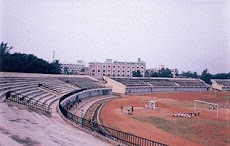Over three
lakh Olive Ridley turtles have laid eggs near River Rushikulya Mouth in Ganjam
district within a span of only one week informed the Forest & Environment Minister
of Odisha Bijoyshree Routray. Mr.Routray said that the mass nesting began in
River Mouth on 13 February. Last year, the turtles had congregated for mass
nesting at the Rushikulya beach on February 29. While around 2.60 lakh turtles
had laid eggs in the Rushikulya rookery in 2008-09, 1.07 lakh turtles had
nested in the beach last year. "This time, they broke the previous record
and over three lakh Olive Ridley Turtles laid eggs so far," confirmed
Divisional Forest Officer, Berhampur SS Mishra. Despite rains lashed in the
area on Sunday evening, over 8,700 Olive Ridley turtles laid eggs in the wee
hours of Monday, he said. Since some more turtles were floating in the sea, DFO
said the nesting was likely to continue for some more days. The Olive Ridleys,
listed under Schedule 1 of the endangered species list, nested in two places
this time. While around 2.50 lakh were nested in the 3.50-km long Sandbar
between Kantiagada and Podampeta, another 50,000 turtles nested near
Purunabandh area, he said. The mass
nesting began today followed by the sporadic nesting in the area.
Clean
nesting sites and conducive atmosphere are some of the reasons attributed to
the record number of Olive Ridleys visited the rookery for nesting, experts
said. This time, the turtles started nesting about a fortnight earlier in the
rookery, forest officials said. Forest officials made elaborate arrangements
for smooth and safe nesting of the turtles. The entire area was divided into 32
sectors. Forest personnel and local volunteers have been deployed in each
sector for counting the eggs. They also provided protections to the eggs in
absent of their mother turtles, said DFO. After laying eggs, the female turtles
go to the deep sea without waiting to see the hatchels, which generally emerged
around 45 days of the nesting. "The local people in the area are
cooperating with the forest personnel to protect the eggs," said Rabindra
Nath Sahu Secretary of the Rushikulya Sea Turtles Protection Committee.
Sources:
Tathay.in & FirstPost.com


















.jpg)


















































No comments:
Post a Comment